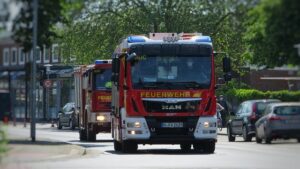Disaster Safety Preparedness for Commercial Areas
 With global warming on the constant rise, it is inevitable to avoid natural disasters. Apart from Mother Nature taking a toll on us, some accidents and disasters are highly common, especially in commercial areas. Dealing with disasters could be truly intimidating, more so when they happen on a large scale or in crowded commercial areas.
With global warming on the constant rise, it is inevitable to avoid natural disasters. Apart from Mother Nature taking a toll on us, some accidents and disasters are highly common, especially in commercial areas. Dealing with disasters could be truly intimidating, more so when they happen on a large scale or in crowded commercial areas.
With a disaster preparedness guide, one can ensure there is minimal damage to the commercial business and its workforce. Today, we will be shedding light on some key aspects of disaster safety preparedness for commercial areas. Here we go:
Prevention is the First Step
If you wish to prepare for a disaster happening in a commercial area, the first thing to do is to prevent its occurrence. For this purpose, one should focus on regular checkups and audits to make sure all safety systems are in place.
For commercial areas, the risks and impact of disasters are going to be completely different than that of a home or business unit. When you have all potential business risks laid out clearly, it becomes easier to prepare a counteraction plan to overcome them.
Say NO to Panicking
The worst thing to do in case of a disastrous situation is to panic. Panic never helps in stressful situations; in fact, it makes the situation worse by distracting one from the real problem at hand.
Moreover, panicking in such situations can also result in time wastage, which is a critical part of crisis and disaster management.
Keep Evacuation Plan in Check
This is one of the most critical steps when it comes to disaster planning and preparedness. Without a proper evacuation plan, it is impossible to take control of the situation.
To ensure that you have a robust evacuation plan in place, the first thing to do is plan your evacuation routes. Divide groups into primary and secondary evacuation exits for all the people working in commercial areas. Your exit routes and areas should be labeled properly and be easy to access.
Hold regular meetings to discuss the evacuation plans with the workforce and assign different duties to different people so they can lead the way when the time comes. Divide people into smaller groups and assign leaders from each group who take ownership and responsibility of their team.
Defining Protocols
A disaster management plan without protocol definitions is incomplete. Each person should have their role defined and they should play their part in ensuring the successful execution of the plan.
First of all, start by delegating responsibilities according to a hierarchy. All employees should know who to reach out to in case of a disaster.
The team lead should be responsible for ensuring the disaster management plan is being carried out in a proper sequence and that everyone is following the rules and regulations. From the entry/exit points to finding food, it all falls under the team lead’s responsibilities.
Prepare Emergency Kit
Your emergency kit should have a list of all these important items:
- First-aid supplies
- Flashlights
- Tool kit
- Batteries
- Non-perishable food items
- Water bottles
Train Your Workforce
Every employee should receive disaster management training once every 3 to 6 months. All pieces of equipment should be checked on a monthly basis and other large-sized equipment and machinery once a year. Safety equipment like smoke detectors, fire alarms, sprinklers, fire hydrants, etc. should be assessed on a regular to prevent disasters from happening in the first place.
Follow Proper Sequence of Safety Steps
A key to successful disaster management is ensuring that you follow all the steps in an accurate order. For instance, if there’s a fire outbreak in the commercial area, you should contact the fire department first before you move to the next step. Keep an address book of emergency contacts in handy and distribute it all over the commercial area so everyone is aligned on the plan of action.
Similarly, in case of flooding or short-circuit, shut down all electrical systems immediately to prevent any chances of further damage.
When Should you Get Professional Help for Disaster Management?
In case of disasters, natural calamities or similar incidents, one should first focus on evacuation of all workforce and customers present in the commercial areas. Once that is done, they should follow the steps based on their action plan to take control of the situation. If anyone sees the situation getting out of control or too difficult to control under the given circumstances, that’s when they should seek out an expert professional for their help and assistance.
With companies like 911 Restoration, Phoenix disaster management and planning has become less of a hassle. 911 Restoration stays on top of its game by providing round-the-clock service and they are efficient enough to serve you within 45 minutes to deal with time-critical disasters. Call us right away to connect with our customer support team for top-notch and 100% gratifying disaster management services.



